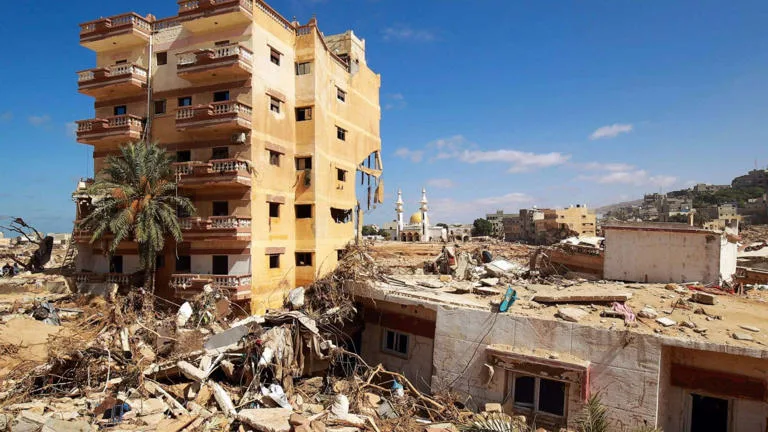Libya, North Africa | Date: September 15, 2023
In a devastating turn of events, the death toll from unprecedented floods in eastern Libya has risen to a shocking 11,300 people, according to the Libyan Red Crescent. An additional 10,100 individuals have been reported missing, leaving the nation in a state of grief and despair.
The catastrophe was unleashed by the relentless force of Mediterranean storm Daniel, which wrought havoc upon Libya, submerging entire neighborhoods and tragically sweeping numerous victims out to sea. The relentless rains, driven by the storm, have left a trail of destruction in their wake.
The Libyan National Center of Meteorology revealed that in the span of just 24 hours, over 16 inches of rainfall inundated the northeastern city of Bayda, overwhelming local infrastructure and triggering widespread flooding. This grim data was tracked by the flood monitoring website Floodlist, further underscoring the severity of the disaster.

The coastal city of Derna suffered the most severe consequences, as two dams buckled under the immense pressure of the flooding waters. These dam failures led to the inundation of a quarter of the city, rendering it a disaster zone. Local authorities reported a complete breakdown of essential services, with electricity and communication lines severed, leaving residents in dire straits.
Although several countries have pledged to send aid to Libya, the logistical challenges are substantial. Many roads remain impassable, and numerous bridges have been destroyed, impeding the delivery of much-needed supplies to the affected areas. The ongoing political strife in Libya, with the nation divided between two rival governments in the east and west, has further complicated rescue efforts and coordination.
Highlighting the tragic preventability of this disaster, the head of the United Nations World Meteorological Organization emphasized the urgent need for a functional meteorological service in Libya. Such a service, if in place, could have provided timely warnings and potentially saved many lives.
The people of Libya and the international community are now faced with the grim reality of the extensive loss of life and the ongoing search for the missing. As efforts to aid and support the affected regions continue, the focus also turns towards the importance of disaster preparedness and mitigation in vulnerable regions like Libya, which remain susceptible to the forces of nature.




